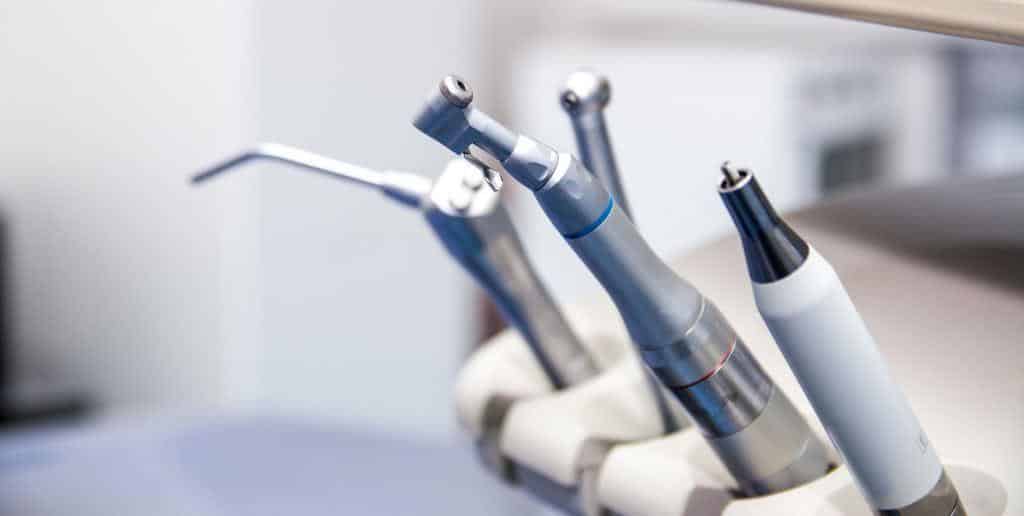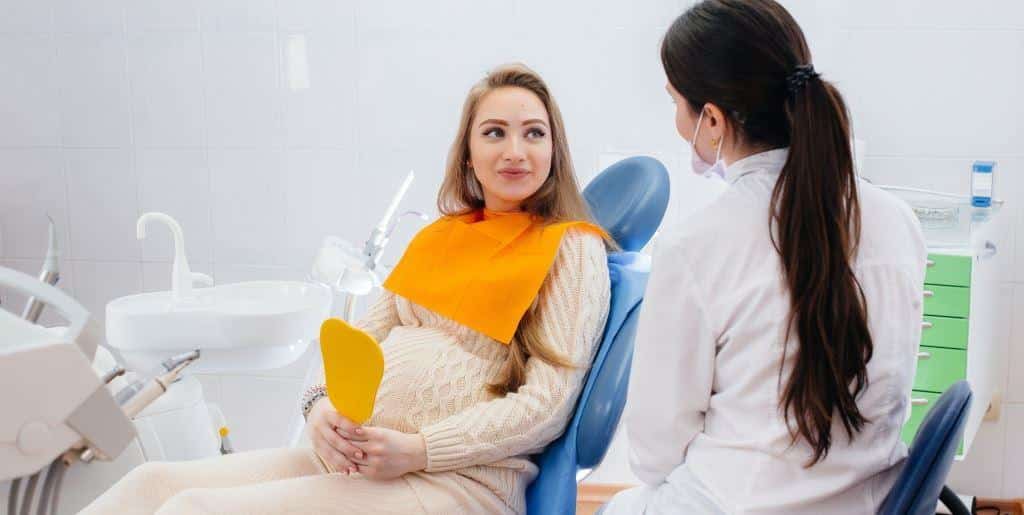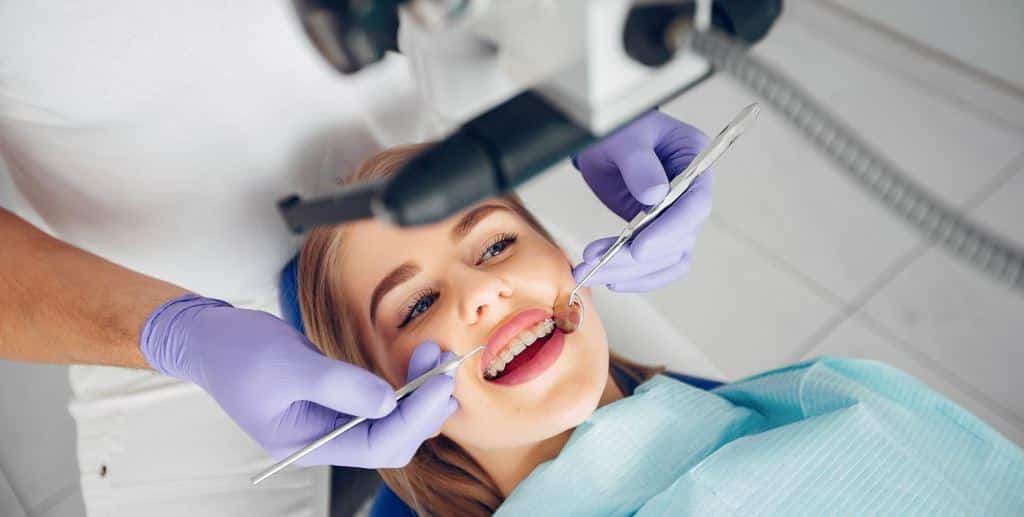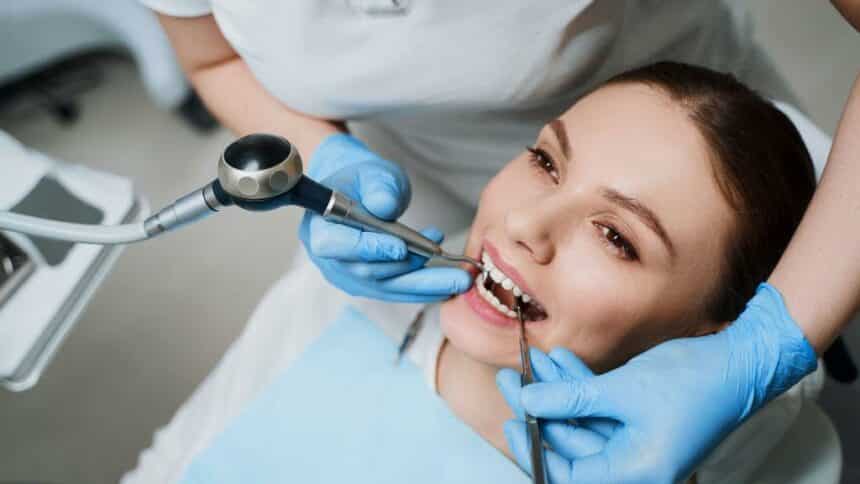Endodontic treatment is nothing less than the notorious (wrongly!) root canal treatment. It is used when there is an infection of the tooth pulp. It consists of cleaning the infected pulp from the root canals and filling them with liquid gutta-percha.
Increasingly, a microscope is being used in endodontics to increase the precision of treatment. With the microscope, the dentist can reach areas that are not visible to the 'naked eye'. We wrote about precision root canal treatment under the microscope in the UK in an earlier article. You can read more about this in a previous article Root canal treatment under the microscope in the UK.
When is endodontic treatment used in the UK?
The most common indication for endodontic treatment is untreated caries. If untreated in the initial phase, when it attacks the dentin, it reaches as far as the pulp and becomes inflamed. Symptoms such as sharp pain, aggravated by touch, and hypersensitivity to cold and hot food and drinks then appear.
We wrote more about caries in our article: Tooth decay - where it comes from, how to treat and prevent it. In it you will read how you can effectively prevent it, as root canal treatment is not its only consequence.
The second most common reason for referral for endodontic treatment in the UK there is a chance of saving the tooth from extraction as a result of a crack or fracture. This is because extensive trauma to the tooth can result in the pulp being exposed, and delay in treatment carries an increasing risk of the pulp becoming infected. If you do not undertake treatment in time, you may find that the only solution is to extract the tooth.
Fracture most often occurs during an impact or fall. Also, poor diet and tooth decay affect its weakening and susceptibility to injury. A tooth can crack at the visible part or at the root. Read more about tooth fracture in our article: Cracked tooth - symptoms and treatment.

What does endodontic treatment involve?
Endodontic treatment in the UK involves a procedure to remove the pulp from the root canals of the tooth (otherwise known as pulp extirpation). This is quite a complex operation as the pulp is highly innervated and vascularised. Once the pulp is removed, the root canal becomes empty. Before it can be filled again, it still needs to be precisely cleaned of any residual dentin and bacteria.
The dentist uses specialised fluids for this for root canal irrigation, with which the canal is flushed out (chemical cleaning), and files and other specialised instruments (mechanical cleaning).
The root canal is also widened and thus prepared for filling. This is usually done with a special substance of natural origin - gutta-percha. It is in liquid form and maintains the tooth structure, preventing the recurrence of inflammation.
It is extremely important that no left empty, as they will quickly become a cluster of bacteria and will eventually cause unwanted complications.

Are there any contraindications?
There are patients for whom root canal treatment carries an increased risk of complications. These include those with heart, kidney or joint conditions and those with a compromised immune status. However, this does not exclude them from treatment. Each case must be individually consulted with the doctor, but this usually comes down to the patient undergoing prophylactic antibiotic treatment.
Pregnancy and lactation are not contraindications to treatment. All that is required is the use of a suitable anaesthetic and prior consultation with the doctor in charge of the pregnancy.
Don't be afraid to visit the dentist during pregnancy. Thanks to modern treatment methods, you can undertake dental treatment without stress. Don't put it off, because dental disease and inflammation in the mouth can lead to low birth weight of the baby. We have gathered all the relevant information about dental treatment during pregnancy for you in our article: Teeth during pregnancy - how to take care of them.

Should you be afraid of endodontic treatment?
Definitely not. Modern root canal treatment is very different from that of years ago. The techniques used, modern instruments and new methods of anaesthesia mean that endodontic treatment in the UK will not leave us traumatised.
A saviour for the most stressed patients, it is commonly accessible and affordable computer anaesthesia. It is one of the most modern solutions offered in dental practices. We wrote about it in an earlier article: Computer anaesthesia in the UK - what it is and how much it costs.
It is important to remember that regular check-ups at the dental surgery and careful oral hygiene are the basis of prevention. You can avoid the need for endodontic treatment by taking proper care of your teeth.

